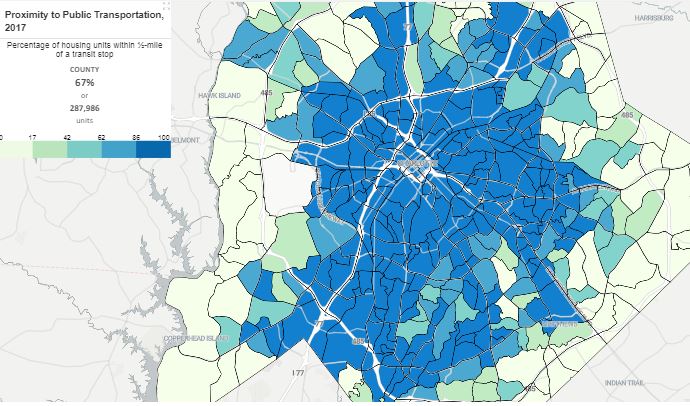Transit equity: more than bus stops
You’ve likely been hearing a lot about equity in the local news lately. There’s been a lot of attention focused on how equity is affected by affordable housing, quality of schools, gentrification, and a host of other very real and pressing social issues. In today’s blog post we examine how access, or lack of access, to high-quality public transit affects equity.
TransitCenter’s new Inclusive Transit: Advancing Equity Through Improved Access & Opportunity report sums it up well: “Allowing people to meet these [day-to-day transportation] needs creates long-term economic opportunities and helps people escape poverty. In addition to transit’s well documented environmental and economic benefits, public transportation can be a powerful tool to advance racial equity and social justice in American cities.”
The much-referenced Equality of Opportunity study identified commuting time as the single strongest factor in the odds of escaping poverty. It’s a stronger predictor than crime, school test scores, or family stability.
Mass transit may not even be available to financially struggling households in rural or sprawling areas. But for Charlotte’s urban core — and rapidly urbanizing neighborhoods — investing in better transit makes sense. For the 30 percent of our residents who don’t own cars, having the choice to save money by riding transit instead of needing to own a car would open up new opportunities to find and maintain employment without the expense of vehicle ownership.
More than just a bus stop
But there’s a caveat. Our current transit system isn’t fully meeting the needs of its riders. It’s also not attracting a lot of new riders. Effective transit that moves the needle on equity must be fast, frequent, reliable, and walkable.
Transit isn’t equitable just because the people who need transit the most have a lot of bus stops near their homes. As this map from the Mecklenburg Quality of Life Explorer shows, most Charlotteans in the lower-income “crescent” that runs from east to north to west Charlotte live within 1/2 mile, or about a 10-minute walk of a transit stop.

Looks pretty good? Well, that’s not the full picture. What if you live in one of these areas and:
- Your final destination isn’t in Uptown? Now you’ll have to transfer buses to reach your final destination. You’ll face a 90-minute (average) one-way trip time. That’s 3 hours less per day that you’ll have to spend with your family and taking care of your daily needs.
- There aren’t safe sidewalks or any crosswalks after you get off the bus? CATS aims to locate bus stops near safe crossings, but some key transit routes have crossings that are very widely spaced. You may have to walk 1/2 mile or more (considering the distance to the nearest signalized crossing, and then backtracking to your destination) in all weather conditions just to safely cross 4 or 6 lanes of traffic. Young African-American men are at a disproportionately higher risk of being killed while walking.
- The bus you’re transferring to comes by your stop only once an hour? If your first bus is just a few minutes late, you’ll miss that connection and may lose your job for being late. Or you could play it safe and take an earlier first bus, but the trade-off is a long wait if it’s not a frequent route.
Charlotte’s bus network is suffering declining ridership after decades of under-investment led to the system not keeping up with the growing and changing needs of our population. CATS CEO John Lewis has committed to fixing the bus network so it will meet those needs. TransitCenter’s report summarizes how the whole community benefits when transit takes care of the people who need it most: “Transit systems that are designed to work for a city or region’s most vulnerable populations will work for everyone.”
Our next blog post in this series will take a closer look at how the planned CATS bus network redesign will improve equity by getting riders to their destinations faster.
Thanks for reading!
As a nonprofit, community support is essential for us to keep doing what we do — including providing free articles like this. If you found this article helpful, please consider supporting Sustain Charlotte.
Want to stay in the loop? Subscribe to our weekly newsletter and follow us on Instagram, Facebook, and Twitter.
